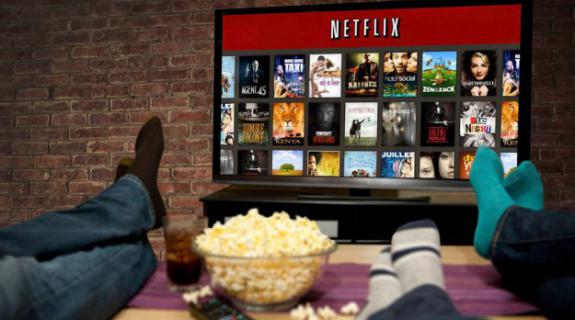Last week, I read several articles on how NBC during their TCA presentation “revealed” Netflix’s ratings for their original shows, and how — lo and behold — they were found to be lacking in comparison to broadcast network ratings. Now, I confess, I also am wildly curious about Netflix’s viewership for its original series because a) I love many of their series b) I’m an entertainment junkie and c) I’m a mild ratings nerd. So, I was really intrigued by the insight that NBC was sharing. Until I read it all.
Can we just talk for a second on how desperate this research sounds?
First, there are some holes in the research, such as focusing on the 18-49 audience for this study. Netflix isn’t demo-obsessed. A 55-year-old subscriber is just as valuable to Netflix as a 29-year-old subscriber. Broadcast networks care about this demographic because that’s the existing ad model. But there’s no reason for a subscription-based service like Netflix to care about the demographic.
Next, the articles reported that there were significant viewership drops week to week for Netflix originals. Well, Netflix viewers do like to consume an entire series in a short amount of time. It’s called binge viewing, maybe you’ve heard of it? Viewer passion drives their business. Not predictable week-to-week ratings. That matters to broadcast and cable because it matters to ad sales. Again—not applicable to Netflix.
It’s similar to comparing live ratings to live plus same day to live plus seven for a single episode. Viewership falls off over time after an episode is released. Netflix releases all of its episodes at once, so that trend applies to the entire season of episodes as opposed to one episode at a time. It’s not an apples-to-apples comparison.
What’s my point here? My point is that this research is like trying to force a square peg in a round hole. The KPIs (Key Performance Indicators – the factors that are crucial to a business’s success) for broadcast and for Netflix are not the same. Nielsen ratings are the Holy Grail for NBC because their revenue comes primarily from advertising. Netflix (and HBO/Showtime/Amazon Prime, etc.) are direct-to-consumer businesses.
Yes, size still matters, but it’s not the Holy Grail. Services such as Netflix live and die by their number of subscribers and their subscription fees. They have to cultivate fan passion and prestige brands to earn those monthly subscription fees. And yes, NBC shows may have more “primetime” viewers than some Netflix shows, but how many of them are willing to pay $8 a month to watch The Mysteries of Laura?
So, what’s a network to do? Stop with the smoke and mirrors. Comparing broadcast ratings to Netflix viewership isn’t going solve the business model problem. It’s not even a very good diversion. Culture and viewers have shifted our business from a dictatorship to a democracy. They rebelled. They changed. And unfortunately broadcast networks really haven’t.
Just look at how quickly we’ve adapted a different language around our new viewing behavior: binge viewing, spoiler alerts, Netflix and chill (ok that one isn’t actually about viewing). Viewers want what they want when and where they want it, and that’s often not at 9 p.m. on Wednesday. They have become outrageously demanding. They’ve acquired a taste for sophisticated, nuanced, complex, layered storytelling. Social media is organically and automatically part of their viewing experience. They want to watch entire seasons in greedy, indulgent gulps. And they don’t want to be interrupted by commercials. I like these viewers by the way. I am them.
In the short term, I applaud NBC for finding new research partners like Rentrack/ComScore, Tivo/Reality Mine and Symphony to develop new ways to measure of how viewers really watch shows now. Do THAT instead of trying to beat Netflix at its well-honed game.
We all know the erosion of the broadcast/cable model is going to continue until the business can actually blow up the existing model, reinvent itself and become viewer first/viewer forward. This is why HBO Now is such a pivotal and strategic priority for Time Warner. They are racing to feed this demand for viewer democracy and high quality, “golden age of TV” programming. It’s not a future play. It’s an oh-crap-we have-to-do-this-now play.
The irony of this is that while NBC is sharing research that demonstrates the Teflon-like quality of primetime, they (and all the broadcast networks) are hedging their bets. NBC Universal’s launch of SeeSo is clearly a calculated move to demonstrate to Wall Street that they are actively reinventing themselves for a direct-to-consumer business. Time will tell if SeeSo can earn its $3.99/month from its comedy-loving, millennial-target audience, but I like the moxie of this upstart new business.
So, instead of wasting time guessing at how many people are watching Netflix’s shows, let’s see more moxie from the broadcast networks, because moxie is what it’s going to take to re-invent this business.
Tags:













































__twocolumncontent.jpg)











